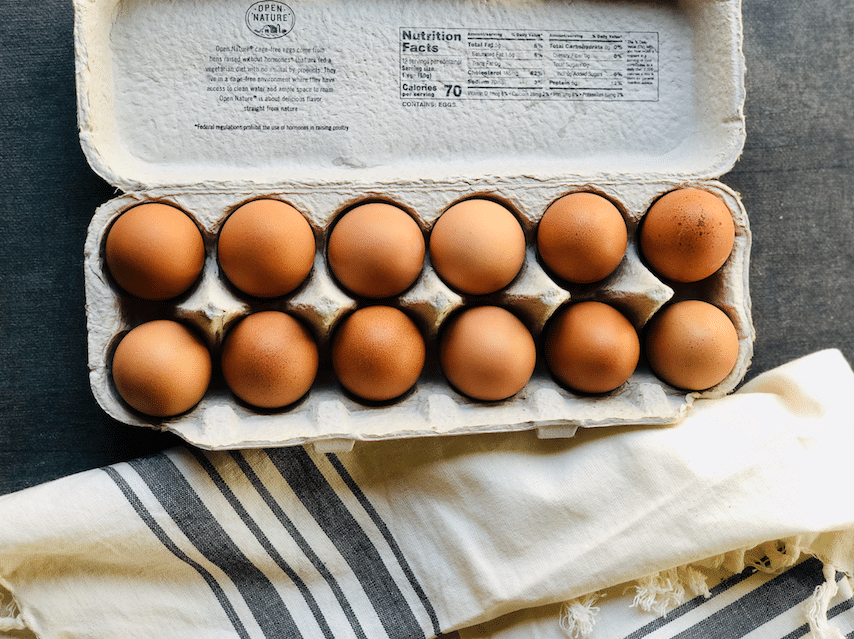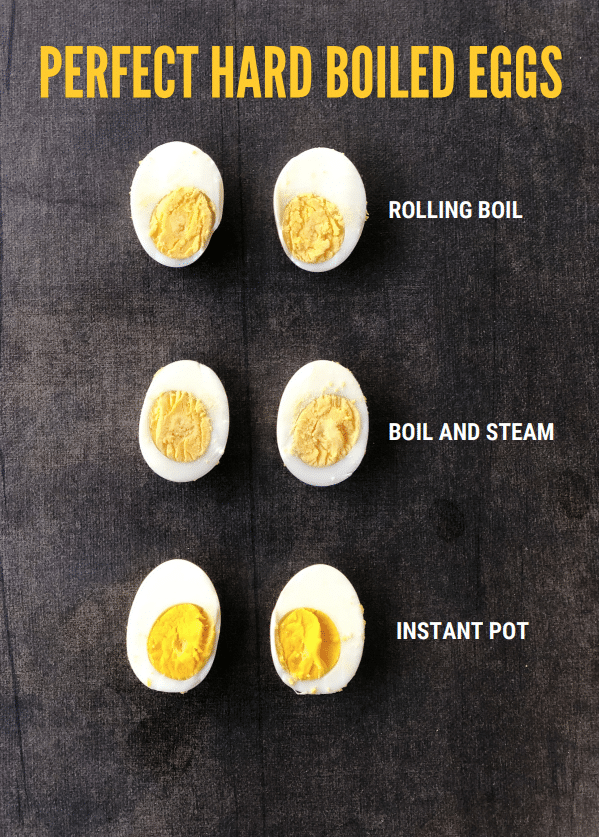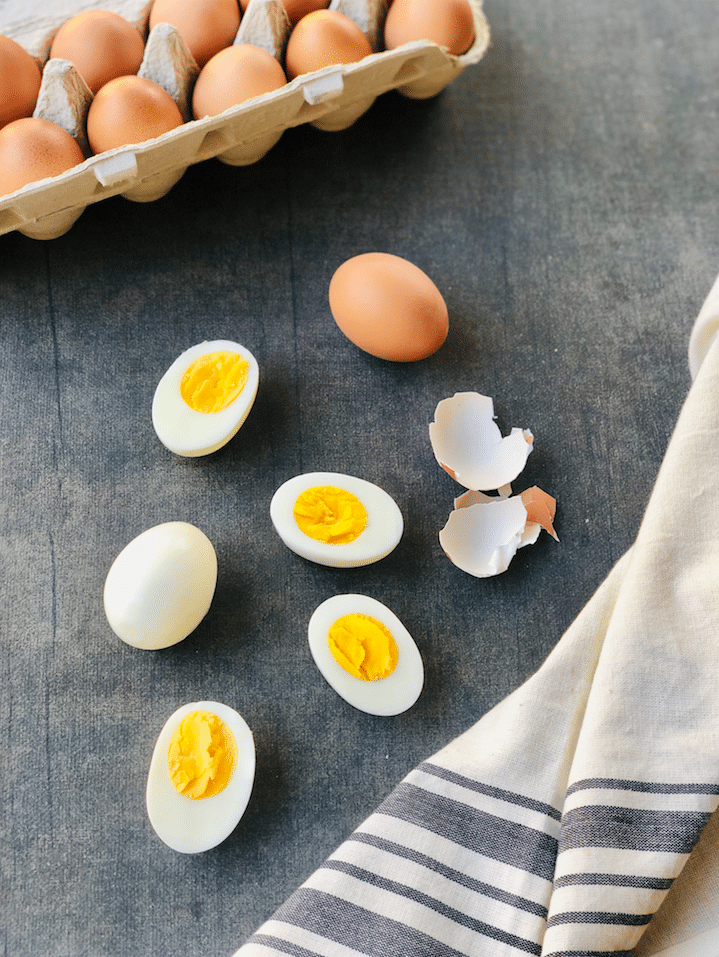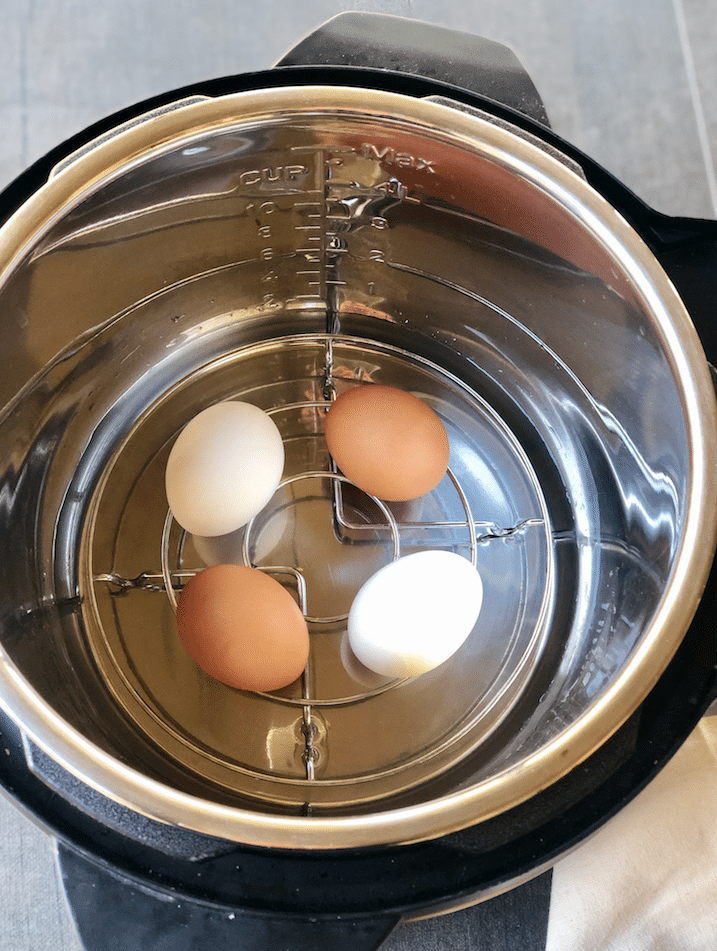Cooking Perfect Hard Boiled Eggs at High Altitude
High altitude affects more than just baking, it affects the rate at which water boils, thus impacting how eggs turn out when boiled.
My family loves hard-boiled eggs and I wanted to experiment with the best way to get perfect eggs at high altitudes, without the green hue around the yolk.
I’ve always added eggs to cool water and brought the water to a boil, then removed them from the heat to let them steam in a covered pot without any attention to how long they sit in the pot, and inevitably they end up with the greenish yolk.
I tested three methods of cooking the eggs at high altitude to see which yielded the best result. I’m located in the foothills of Colorado at 5,800 feet but the methods also work at 7,000 feet and above.
The first I’ll call a boil and steam method, the second a rolling boil method and the third the instant pot method.
Tips for Cooking Eggs at High Altitude
No matter which method you use, to get perfect eggs, you must use older eggs (1 week old or longer) and let the eggs come to room temperature before you cook them. Otherwise, you will risk cracking the eggs and you’ll also have a hard time peeling them if the eggs are fresh.
If you need help deciding which eggs to purchase at the grocery store – be sure to read our guide on Cracking the Egg Code, the difference between cage-free, free-range, and organic eggs.
Method One: Gentle Boil & Steam
Place Eggs in Cool Water and Bring to a Boil. Remove from heat and cover to let the eggs steam.
This method has always been my tried and true approach because this is how I learned to boil eggs from my mother. It has served me well over the years and this method results in perfect hard-boiled eggs as long as you are attentive and do not let the eggs oversteam.
However, if you let the eggs steam for too long, that is when you get the greenish hue on the yolk.
- Let the eggs come to room temperature by resting on the counter for 10 to 15 minutes.
- Place the eggs in a single row in a saucepan and cover with enough water for the eggs to be submerged.
- Place the pot onto the stove and heat over high heat until the water begins to boil.
- Boil the eggs for 3 minutes, then remove from the heat.
- Cover the pot and let the eggs steam for 17 minutes until they are cooked through.
- Immediately cool the eggs by gently dumping the hot water and pouring cold water into the pot.
- Crack and peel as soon as the eggs are cool to the touch.
This method allowed for the easiest way to peel the eggs.
If you let the eggs sit in the hot water for longer than 17 minutes, you risk getting the greenish hue on your eggs.
The egg yolk remained in the center of the eggs with this method, likely as a result of the eggs coming to a warmer temperature at the same time as the water, so the yolk was centered in the egg.
Method Two: Rolling Boil – How Long to Boil Eggs
Add Room Temperature Eggs to Boiling Water
This approach seemed counter-intuitive to me because I was afraid the eggs would crack when they met the boiling water. However, as long as you use room-temperature eggs and gently place them into the pot using a spoon, you will not get cracked eggs.
If, however you drop the eggs into the boiling water, you will most certainly get cracks as soon as the eggs touch the bottom of the pan.
I was pleasantly surprised by the results and will use this method going forward as I did not get any green hue around the egg yolk whatsoever.
- Bring eggs to room temperature by allowing them to rest on the counter for 15 minutes.
- Bring a pot of water to a rolling boil. Make sure you have enough water to cover the eggs in the pot.
- Gently lower the eggs into the pot with a spoon, being careful not to drop them for they will crack.
- Boil the eggs for 15 minutes.
- Remove from the heat and let the eggs sit for one minute before cooling.
- Gently pour out the hot water and add cold water to the pot to cool the eggs.
- Remove the eggs from the pot and peel as soon as they are at room temperature
Method Three: Instant Pot Cooked Eggs
If you have an Instant Pot, you can cook the eggs using pressure and get a perfect “hard-boiled” texture in just 10 minutes.
This method is incredibly easy, yields perfect eggs without the greenish hue around the yolk, and is the fastest way to make hard-boiled eggs.
- Place the rack in the bottom of your Instant Pot.
- Add 1 cup of water to the pot.
- Place the eggs on the rack. Close the lid and set the pressure release to
- Set the Instant Pot to manual for 5 minutes. Allow for natural pressure release for 5 minutes, then place a towel over the valve to quickly release the remaining pressure and carefully remove the eggs from the pot. Place in a bowl to run cold water over the eggs to cool.
- Peel as soon as the eggs are cool enough (i.e. room temperature)
Of the three methods tested, I believe the rolling boil and Instant Pot cooked eggs yield consistent results every time.
If you follow the gentle boil and steam method, you cannot allow the eggs to steam for longer than 17 minutes, otherwise, you risk getting the greenish hue on the yolk.
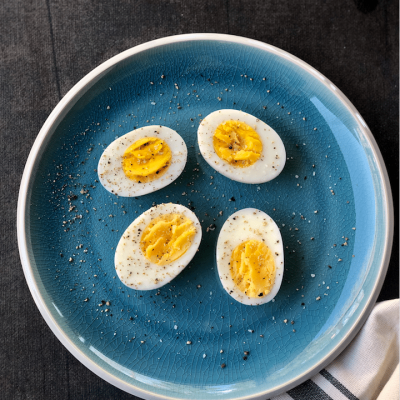
High Altitude Hard-Boiled Eggs
Ingredients
- eggs
- water
Instructions
Method 1: Gently Boil and Steam
- Let the eggs come to room temperature by resting on the counter for 10 to 15 minutes.
- Place the eggs in a single row in a saucepan and cover with enough water for the eggs to be submerged.
- Place the pot onto the stove and heat over high heat until the water begins to boil.
- Boil the eggs for 3 minutes, then remove from the heat.
- Cover the pot and let the eggs steam for 17 minutes until they are cooked through.
- Immediately cool the eggs by gently dumping the hot water and pouring cold water into the pot.
- Crack and peel as soon as the eggs are cool enough to handle (i.e. room temperature)
Method 2: Rolling Boil
- Bring eggs to room temperature by allowing them to rest on the counter for 15 minutes.
- Bring a pot of water to a rolling boil. Make sure you have enough water to cover the eggs in the pot.
- Gently lower the eggs into the pot with a spoon, being careful not to drop them for they will crack.
- Boil the eggs for 15 minutes.
- Remove from the heat and let the eggs sit/simmer for 1 minute.
- Gently pour out the hot water and add cold water to the pot to cool the eggs.
- Remove the eggs from the pot and peel as soon as they are room temperature
Method 3: Instant Pot Cooked Eggs
- Place the rack in the bottom of your Instant Pot.
- Add 1 cup of water to the pot.
- Place the eggs on the rack. Close the lid and set the pressure release to
- Set the Instant Pot to manual for 5 minutes.
- Allow for natural pressure release for 5 minutes, then place a towel over the valve to quickly release the remaining pressure and carefully remove the eggs from the pot.
- Place the eggs in a bowl and run cold water over the eggs to cool.
- Peel as soon as the eggs are cool enough (i.e. room temperature)
Best Way to Peel Hard Boiled Eggs
Hard-boiled eggs are easiest to peel when they are at room temperature. Peeling cold eggs straight from the refrigerator is a pain and you’ll find that chunks of the egg will stick to the shell. I recommend peeling the eggs right after they are cooled from boiling.
Simply roll the eggs on the counter to break up the shell and peel the shell off. Run the eggs under cool water to catch any remaining shell fragments.
While I have heard adding a teaspoon of salt, vinegar, or baking soda to the water when boiling helps the shells come off easier when peeling. I’ve tried this and cannot say with any certainty that it helped whatsoever.
I did find peeling brown cage-free eggs was easier than conventional white shell eggs, but that could just mean they were older eggs.
How to Store Hard Boiled Eggs
If you are storing non-peeled hard-boiled eggs, you can use the egg carton to store them if you wish. I prefer to peel the eggs immediately after boiling and cooling and store them in an airtight food storage container in the refrigerator. This way, they are already peeled and ready at a moment’s notice for addition to a salad, and as a quick grab-and-go option for the family.
Eggs can be stored for up to one week in the refrigerator. You can always write the date you boiled the eggs on a piece of tape to affix to your food storage container to be sure you are not eating old eggs.
Recipes Using Hard Boiled Eggs
Shaving Cream Dyed Easter Eggs
Now that you see three ways to make perfect eggs at high altitude, let us know which is your preferred method and any other tips or tricks you have for cooking or peeling the eggs in the comments below.
SuperSafeway is a blog devoted to helping you find the best deals at Safeway in the Denver division. Every week we slice and dice the ad and tell you the best deals at Safeway with and without coupons. For more low prices, check out Super Safeway’s weekly ad coupon matchup page. Want to stay updated on the best deals? If so, make sure to like Super Safeway on Facebook, join our Facebook group, follow us on Twitter, Instagram, or Pinterest and subscribe to our newsletter.
* Please note – Savings information is based on Colorado pricing and the Safeway Coupon Policy for the Denver Division which includes Colorado, Nebraska, New Mexico, Wyoming and South Dakota. Your market may vary. Prices may vary per location*


